Come join us now, and enjoy playing your beloved music and browse through great scores of every level and styles!
Can’t find the songbook you’re looking for? Please, email us at: sheetmusiclibrarypdf@gmail.com We’d like to help you!
Table of Contents

Best Sheet Music download from our Library.

Please, subscribe to our Library.
If you are already a subscriber, please, check our NEW SCORES’ page every month for new sheet music. THANK YOU!
Jack DeJohnette: The Multidirectional Pulse of Modern Jazz
Jack DeJohnette stands as one of the most influential, versatile, and enduring figures in the history of jazz. More than just a drummer, he is a complete musician – a composer, bandleader, pianist, and sonic innovator whose rhythmic conception fundamentally reshaped the language of jazz drumming. His career, spanning over six decades, traverses virtually every significant movement in modern jazz, from avant-garde explorations and acoustic post-bop to electric fusion and world music dialogues, all while maintaining a distinct, instantly recognizable voice. To delve into DeJohnette is to explore the very heartbeat of contemporary jazz.
Browse in the Library:
Or browse in the categories menus & download the Library Catalog PDF:
I. Biography: Roots and Rhythms (1942-Present)
Born on August 9, 1942, in Chicago, Illinois, Jack DeJohnette was immersed in music from the start. His family environment was rich with diverse sounds: his mother loved classical music and opera, his aunt played boogie-woogie piano, and the vibrant Chicago blues scene pulsed outside his door. He began studying classical piano at age four, demonstrating early talent. However, the rhythmic allure proved stronger. Inspired initially by marching bands and then captivated by the swing of Gene Krupa and the burgeoning bebop revolution embodied by Max Roach, Kenny Clarke, and Art Blakey, DeJohnette switched his primary focus to drums around age 14.
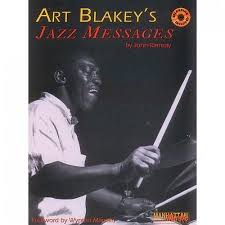
Chicago provided a fertile training ground. He played R&B, blues (with legends like Howlin’ Wolf and Freddie King), and early jazz gigs. He studied formally at the American Conservatory of Music while simultaneously absorbing the lessons of the city’s jazz giants like Wilbur Campbell and Vernel Fournier. Crucially, he witnessed Elvin Jones play with John Coltrane in 1965 – a transformative experience that solidified his desire to push rhythmic boundaries. He also began exploring piano again, integrating harmonic thinking into his rhythmic approach.
In 1966, seeking broader horizons, DeJohnette moved to New York City. The timing was perfect. The avant-garde was flourishing, post-bop was evolving, and new possibilities were opening up. He quickly became an in-demand sideman, working with seminal figures like John Coltrane (briefly, just before Coltrane’s death, including the album Cosmic Music), Jackie McLean (albums like New and Old Gospel), Bill Evans (replacing Paul Motian for a period, heard on Bill Evans at the Montreux Jazz Festival), Stan Getz, and Charles Lloyd (including the hit album Forest Flower).
His career trajectory changed irrevocably when he joined Miles Davis‘s band in 1969, replacing Tony Williams during the Bitches Brew sessions. DeJohnette became a cornerstone of Davis’s most radical electric period (1969-1971), contributing to landmark albums like Bitches Brew, Jack Johnson, Live-Evil, and On the Corner. This experience immersed him in the fusion of jazz, rock, funk, and electronic textures, profoundly influencing his conception of rhythm, texture, and the role of the drummer in an ensemble.
Since the early 1970s, DeJohnette has led his own diverse projects with relentless creativity while maintaining deep, long-lasting collaborations, most famously with Keith Jarrett. He co-founded the influential trio with Jarrett and bassist Gary Peacock in 1983, a group celebrated for its unparalleled interplay and deep exploration of the jazz standard repertoire for over three decades. He also formed the collective Gateway with John Abercrombie (guitar) and Dave Holland (bass), explored world music with Special Edition and other ensembles, and collaborated with a staggering array of artists across genres.
Based for many years in the Hudson Valley, New York, DeJohnette remains active, composing, performing, and recording. He is a multiple Grammy winner, a National Endowment for the Arts Jazz Master (2012), and continues to be a revered elder statesman whose work continues to inspire and challenge.

II. Music Style: The Multidirectional Approach
DeJohnette’s drumming defies easy categorization. He synthesized the innovations of his predecessors – the polyrhythmic density of Elvin Jones, the melodic cymbal work of Tony Williams, the orchestral approach of Max Roach, the fluidity of Roy Haynes, the power of Art Blakey – and forged something entirely personal: the “Multidirectional” approach.
- Polyrhythmic Fluidity: At the core is a mastery of layered, shifting rhythmic patterns. He doesn’t just play “time”; he creates a constantly evolving rhythmic tapestry. He effortlessly superimposes triplets over duple meters, plays in multiple time signatures simultaneously (or implies them), and shifts the perceived pulse seamlessly. Unlike Elvin’s volcanic three-over-four, DeJohnette’s polyrhythms often feel more liquid, flowing, and harmonically integrated. He might imply a 3/4 feel over a 4/4 bass line while simultaneously decorating with figures in 5 or 7.
- Tonal Drumming & Texture: DeJohnette treats the drum set as a melodic and textural instrument. His cymbal work is legendary – shimmering, dark, complex rides (often using rivets), explosive crashes, and intricate patterns that sing melodically. He uses the entire drum, exploiting the tonal variations of different heads, rims, shells, and sticks/mallets. He incorporates bells, gongs, and electronic textures (especially during his fusion period) to expand his sonic palette. Dynamics are crucial, ranging from feather-light whispers to thunderous eruptions.
- Elastic Time & Flow: While possessing rock-solid time, DeJohnette often manipulates the feel of time. He stretches and contracts phrases, delays downbeats, accelerates through fills, creating a sense of elastic pulse. This “floating” quality, particularly evident in ballads and free playing, gives his music a unique sense of flow and suspension. He doesn’t just keep time; he sculpts it.
- Interaction & Conversation: DeJohnette is the quintessential interactive drummer. He listens intently and responds instantaneously, weaving his patterns around soloists and comping with incredible rhythmic and timbral sophistication. He doesn’t merely accompany; he dialogues, provokes, supports, and co-creates the musical narrative in real-time. His ability to shift gears instantly – from supportive swing to aggressive polyrhythmic commentary to textural soundscapes – makes him the ultimate ensemble drummer.
- Versatility Across Styles: Few drummers move with such authority across such a wide spectrum. He can deliver driving, funky backbeats (Miles electric period), sublime, interactive swing (Jarrett trio), abstract free improvisation, complex post-bop, and intricate world music grooves, all with equal conviction and his unmistakable signature. This versatility stems from his deep musicality, not just technical facility.
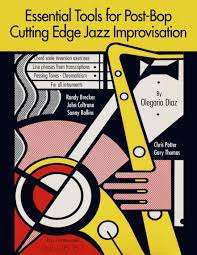
III. Improvisational Concepts and “Licks”
DeJohnette’s improvisational language is deeply integrated with his overall style. Rather than relying on pre-set “licks,” he builds solos and comping patterns from fluid combinations of core concepts:
- Melodic Phrasing on Drums: He constructs solos that have a strong melodic arc, often beginning with thematic ideas that develop, contrast, and resolve. He uses space dramatically and builds tension through rhythmic and dynamic development.
- Triplet-Based Development: A cornerstone is the fluid manipulation of triplets. He might:
- Play continuous triplet rolls across the toms and snare, shifting accents.
- Interlace triplet patterns between the ride cymbal and snare/bass drum.
- Play displaced triplets that start on different parts of the beat, creating syncopation and polyrhythmic tension.
- Use triplet flams or drags as punctuation.
- Metric Modulation & Displacement: He constantly shifts the perceived meter or displaces familiar patterns:
- Taking a simple snare/kick pattern and gradually shifting its placement relative to the bar line.
- Playing a phrase in 3/4 over the band’s 4/4, then seamlessly transitioning the band or himself.
- Using fills that imply a temporary shift in time signature before snapping back.
- Cymbal Melodies: Solos often feature extended sections focused purely on cymbals, exploring their sustain, washes, and tonal variations in a melodic and textural way. He creates “melodies” by hitting different cymbals in sequence and manipulating their decay.
- Dynamic Textures: Improvisations frequently explore extreme contrasts in volume and density, moving from sparse, pointillistic textures using rims and sticks to thunderous, dense rolls across the entire kit.
- Motivic Development: Even in free contexts, he often establishes a short rhythmic or timbral motif (e.g., a specific tom pattern, a cymbal bell figure) and then develops, varies, and fragments it throughout the solo.
- Interplay as Improvisation: Much of his most profound improvisation happens within the ensemble context – his responses to a soloist’s phrase, his comping variations under a piano solo, the subtle shifts in feel he introduces during a vamp. This constant, reactive improvisation is central to his genius.
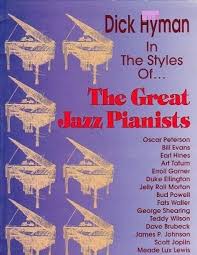
IV. Chord Progressions, Harmony, and Composition
As a composer and bandleader, DeJohnette’s harmonic language is as diverse as his drumming, reflecting his broad influences and musical curiosity:
- Modal Foundations: Much of his work, especially with Special Edition and his own groups, is grounded in modality. He favors vamps and extended sections on a single chord or mode, allowing for deep rhythmic exploration, collective improvisation, and the building of trance-like grooves. Tunes like “One for Eric” (tribute to Dolphy) exemplify this.
- Post-Bop Complexity: His compositions can also feature sophisticated, shifting harmonies reminiscent of Herbie Hancock or Wayne Shorter. He employs chromaticism, altered dominants, and unexpected chord substitutions, demanding strong harmonic awareness from his bands (e.g., much of the Special Edition repertoire).
- Vamp-Based Structures: A hallmark is the use of strong, often bass-driven, repetitive vamps. These serve as springboards for improvisation and rhythmic development. They can be funky (“Where or Wayne”), hypnotic (“Zoot Suite”), or harmonically ambiguous. His mastery lies in how the band interacts over and around these vamps.
- Open Forms & Free Association: Particularly in his more exploratory work (e.g., Music for the Fifth World), DeJohnette employs open or through-composed forms that prioritize collective improvisation, texture, and development over predefined chord changes. Harmony becomes more about color, tension/release, and sonic landscapes than functional progression.
- World Music Influences: His harmonic language frequently incorporates elements from other traditions: pentatonic scales common in African music, drones reminiscent of Indian ragas, or the harmonic simplicity often found in folk melodies. This is blended seamlessly with jazz harmony.
- Piano Influence: His background as a pianist significantly informs his compositions. He thinks harmonically and melodically, crafting tunes with strong themes and interesting chord voicings, even if the complexity often manifests rhythmically in his drumming. Albums under his leadership showcase a wide harmonic palette.
- Harmonic Rhythm: DeJohnette often manipulates the rate of harmonic change. He might stay on one chord for extended periods, creating intensity through rhythm and texture, or shift chords rapidly in complex sequences. He understands how harmonic rhythm interacts with and influences the flow of the music.
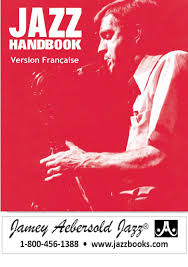
V. Influences: A Broad Tapestry
DeJohnette’s influences are vast and varied:
- Drummers: Max Roach (melodic approach, composition), Art Blakey (power, leadership), Philly Joe Jones (finesse, bebop vocabulary), Roy Haynes (fluidity, time), Elvin Jones (polyrhythmic density, energy – the most significant influence), Tony Williams (innovation, intensity, fusion concepts).
- Pianists: Thelonious Monk (angularity, space), Bill Evans (harmony, impressionism), Herbie Hancock (harmony, fusion, versatility), McCoy Tyner (modal power), Keith Jarrett (lyricism, deep exploration).
- Saxophonists: John Coltrane (spiritual intensity, modal/free exploration), Wayne Shorter (compositional genius, enigmatic melodies), Ornette Coleman (free concepts), Eric Dolphy (avant-garde expressionism).
- Trumpeters: Miles Davis (conceptual innovation, bandleading, fusion).
- Bassists: Charles Mingus (composition, intensity), Scott LaFaro (interaction with Bill Evans), Dave Holland (versatility, composition).
- Other: Chicago Blues (groove, feel), Classical Music (structure, form, piano foundation), African Music (polyrhythms, communal spirit), Indian Classical Music (drone, rhythmic cycles), Rock & Funk (energy, backbeat).
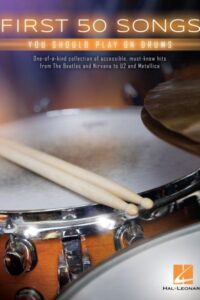
VI. Legacy: The Enduring Pulse
Jack DeJohnette’s legacy is monumental and multifaceted:
- Redefining Drumming: He fundamentally expanded the vocabulary and role of the jazz drummer. He demonstrated that the drums could be a primary melodic, textural, and compositional force within the ensemble, not just a timekeeper. His “multidirectional” concept is a foundational approach studied by drummers worldwide.
- The Ultimate Sideman: His unparalleled versatility, sensitivity, and interactive skills made him the drummer of choice for generations of jazz masters across the stylistic spectrum. He elevated every band he played in.
- Keith Jarrett Standards Trio: His 30+ year collaboration with Jarrett and Peacock created arguably the definitive piano trio of the late 20th/early 21st century. Their deep listening, improvisational telepathy, and reverence for the songbook set a new benchmark for interactive trio playing.
- Innovative Bandleader: Through Special Edition, Directions, and other projects, he consistently led bands featuring cutting-edge talent (David Murray, John Purcell, Michael Cain, Lonnie Plaxico, Gary Thomas, Greg Osby, etc.), blending composition and improvisation in unique ways and exploring global sounds long before “world jazz” became common.
- Bridge Between Eras: He played pivotal roles in both the acoustic avant-garde/post-bop of the 60s and the electric fusion revolution of the 70s, embodying the continuity and evolution of jazz.
- Mentorship: He has nurtured and influenced countless younger musicians, both through direct collaboration and through his recorded legacy. Drummers like Brian Blade, Jeff “Tain” Watts, and Eric Harland carry clear echoes of his influence while finding their own voices.
- Artistic Integrity: Throughout his career, DeJohnette has followed his own muse, exploring diverse projects with unwavering commitment to artistic growth and expression, regardless of commercial trends.
VII. Major Works and Partnerships
- With Miles Davis: Bitches Brew (1969), Jack Johnson (1971), Live-Evil (1971), On the Corner (1972). Defined the sound of Miles’s electric zenith.
- With Charles Lloyd: Forest Flower (1966), Soundtrack (1968). Early exposure on popular, boundary-pushing records.
- With Bill Evans: Bill Evans at the Montreux Jazz Festival (1968). Showcased his sensitive acoustic trio playing.
- Gateway (with John Abercrombie & Dave Holland): Gateway (1975), Gateway 2 (1977), Homecoming (1994), In the Moment (1996). Collective improvisation at its finest, blending abstraction and groove.
- Special Edition: His primary vehicle for original composition and featuring new talent. Key albums: Special Edition (1979), Tin Can Alley (1980), Inflation Blues (1982), Album Album (1984), Irresistible Forces (1987), Extra Special Edition (1994).
- Directions/New Directions: Earlier bands featuring John Abercrombie, Alex Foster, Mike Richmond, Warren Bernhardt, Eddie Gomez. Albums: Cosmic Chicken (1975), Untitled (1976), New Directions (1978), New Directions in Europe (1979).
- Keith Jarrett Standards Trio (with Gary Peacock): A vast discography of live and studio recordings. Landmarks: Standards, Vol. 1 & 2 (1983), Still Live (1986), The Cure (1990), Bye Bye Blackbird (1991), Tokyo ’96 (1996), Whisper Not (1999), The Out-of-Towners (2001), My Foolish Heart (2007). The gold standard for the jazz piano trio.
- Keith Jarrett American Quartet (with Dewey Redman, Charlie Haden): Fort Yawuh (1973), Treasure Island (1974), Death and the Flower (1974), Back Hand (1974), Mysteries (1975). A powerhouse group blending post-bop and free elements.
- Parallel Realities (with Herbie Hancock & Pat Metheny): Parallel Realities (1990), Parallel Realities Live (1993). A superstar trio summit meeting.
- Solo/Multimedia: Pictures (1976 – solo percussion), Music for the Fifth World (1992 – inspired by Native American traditions, featuring Vernon Reid, John Scofield), Peace Time (2008 – Grammy-winning New Age/Jazz), Sound Travels (2012), Made in Chicago (2015 – with Muhal Richard Abrams, Roscoe Mitchell, Henry Threadgill, Larry Gray).
- Other Key Collaborations: Freddie Hubbard (Red Clay), Joe Henderson (Multiple), McCoy Tyner (Trident), Stan Getz (Dynasty), Sonny Rollins (Next Album), George Benson (Beyond the Blue Horizon), Michael Brecker (Tales from the Hudson), numerous ECM sessions with Kenny Wheeler, John Surman, etc.

VIII. Discography Highlights (as Leader/Co-Leader)
- The Jack DeJohnette Complex (1968)
- Sorcery (1974)
- Cosmic Chicken (1975 – Directions)
- Untitled (1976 – Directions)
- Pictures (1976 – Solo)
- Gateway (1975 – Gateway)
- Gateway 2 (1977 – Gateway)
- New Directions (1978)
- Special Edition (1979)
- Tin Can Alley (1980)
- Inflation Blues (1982)
- Album Album (1984)
- Irresistible Forces (1987)
- Audio-Visualscapes (1988)
- Parallel Realities (1990 – w/ Hancock & Metheny)
- Music for the Fifth World (1992)
- Extra Special Edition (1994)
- Dancing with Nature Spirits (1995)
- Oneness (1997)
- Peace Time (2008)
- Sound Travels (2012)
- Made in Chicago (2015)
- Hudson (2017 – w/ John Scofield, John Medeski, Larry Grenadier)
- Live at the Detroit Jazz Festival 2020 (2023 – w/ Ravi Coltrane, Matthew Garrison)
(Keith Jarrett Standards Trio discography is vast and essential, listed separately under partnerships).
IX. Most Known Compositions and Performances
- Compositions:
- “One for Eric” (Tribute to Eric Dolphy, often played by Special Edition)
- “Zoot Suite” (A complex, episodic piece showcasing his band)
- “Ebony” (A powerful, vamp-based tune)
- “Where or Wayne” (A funky, driving composition)
- “Picture 3” / “Picture 6” (From Pictures, solo percussion explorations)
- “India” (A world-influenced piece)
- “Silver Hollow” (A beautiful ballad often featuring his piano)
- “Monk’s Plumb” (A tribute to Thelonious Monk)
- “Jack In” (An energetic signature tune)
- Iconic Performances (Specific Recordings):
- His drumming throughout Miles Davis’s Bitches Brew and Jack Johnson.
- The entire Keith Jarrett Standards Trio album Tokyo ’96 (especially the intensity of the encore “Over the Rainbow”).
- The solo on “If I Were a Bell” from the Jarrett Trio’s Still Live.
- His explosive interplay with the band on “One for Eric” from the Special Edition album.
- The collective improvisation on Gateway’s “Back-Woods Song” (Gateway).
- His solo piano piece “Silver Hollow”.
- The live energy captured on Parallel Realities Live (with Hancock & Metheny).
- The title track from Peace Time.
X. Jack DeJohnette: The Eternal Flow
Jack DeJohnette is more than a master drummer; he is a force of nature in jazz. His “multidirectional” pulse has been the heartbeat beneath some of the most important and diverse music of the past half-century. From the avant-garde crucible to the electric cauldron of Miles, through the sublime communion of the Jarrett trio, and into his own constantly evolving explorations of sound, rhythm, and harmony, DeJohnette has remained a vital, searching, and profoundly musical artist.
His legacy is not just in the groundbreaking techniques he pioneered or the countless classic recordings he graced, but in the very spirit he embodies: one of fearless exploration, deep listening, boundless versatility, and an unwavering commitment to the flow of musical creativity. He is, truly, a musician who plays the drums, shaping the time and space of jazz with unparalleled imagination and grace. His pulse continues to resonate, an eternal flow in the ever-changing river of music.
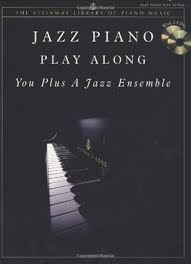
Jack DeJohnette: One of the most exciting Drum Solos with Keith Jarrett: Woody’n You
Jack DeJohnette – Keith Jarrett – Gary Peacock: Woody’n You Standards – Live in Tokyo – 1986.
Search your favorite sheet music in the category of Jazz, Blues, Soul, & Gospel.
Keith Jarrett Trio – If I Were A Bell
Recorded Live In Tokyo,July 25,1993 at Open Theatre East
Keith Jarrett (p) Gary Peacock (b) Jack DeJohnette (d)
Bill Evans and Jack DeJohnette
Jack DeJohnette’s collaboration with Bill Evans, though relatively brief (roughly April 1968 to early 1969), represents a fascinating, pivotal, and often underappreciated chapter in the history of both musicians. It occurred during a period of significant transition for Evans and marked a crucial developmental phase for the young DeJohnette. Their partnership pushed boundaries within the piano trio format, resulting in music of profound beauty, intricate interplay, and sometimes startling intensity.
The Context: Evans in Flux
- Post-LaFaro Trauma: Bill Evans was still deeply affected by the tragic death of his revolutionary bassist Scott LaFaro in 1961. The trio with Paul Motian and LaFaro had redefined jazz piano trio interplay. While Motian remained a constant, finding a bassist and drummer who could approach that level of telepathic communication and contrapuntal freedom was an ongoing challenge.
- The Gomez Trio: By 1966, Evans had settled into a highly successful trio with bassist Eddie Gomez (who stayed for 11 years) and drummer Philly Joe Jones. This trio focused more on Evans’ lyricism and harmonic sophistication, with Jones providing dynamic, swinging, and sometimes explosive drumming. While popular, it leaned towards a more traditional “piano with rhythm section” feel compared to the collective improvisation of the LaFaro band.
- Seeking New Rhythmic Directions: By 1968, Evans felt restless. He admired the freer rhythmic concepts emerging in jazz, particularly the polyrhythmic innovations of Elvin Jones with John Coltrane and Tony Williams with Miles Davis. He wanted a drummer who could bring more interactive complexity and textural variety back to his trio, moving beyond Philly Joe’s powerful but fundamentally bebop/swing-based approach.
Enter Jack DeJohnette
- The Recommendation: DeJohnette, then 25 and newly established in New York after his Chicago apprenticeship, was recommended to Evans by Tony Williams himself. Williams, leaving Miles Davis’ band, suggested DeJohnette as his replacement (though Miles ultimately chose Jack for his own band later).
- Mutual Admiration: Evans was impressed by DeJohnette’s versatility, musicality, and his unique blend of polyrhythmic fluency (influenced by Elvin Jones) with a sophisticated touch and sensitivity to dynamics and texture. DeJohnette, deeply respectful of Evans’ harmonic genius and introspective lyricism, saw it as a major opportunity.
- The Challenge: The pairing was audacious. Evans’ music demanded subtlety, space, and deep listening. DeJohnette’s style, even then, was powerful, multidirectional, and capable of great density. Integrating his Elvin/Tony-influenced concepts into Evans’ delicate soundworld required significant adaptation from both.
The Musical Partnership: Innovation & Tension
Their collaboration produced some extraordinary music characterized by:
- Heightened Interplay & Collective Improvisation: DeJohnette immediately moved the trio away from a piano-centric approach. He interacted with Gomez and Evans as an equal voice:
- Conversational Drumming: His comping wasn’t just timekeeping; it was responsive commentary, filling spaces, answering phrases, and propelling the music forward with shifting accents and polyrhythmic layers.
- Bass-Drum Symbiosis: He developed a remarkable rapport with Eddie Gomez. Gomez, a virtuoso with incredible facility and harmonic awareness, thrived on the challenge. They engaged in intricate dialogues, sometimes independent of Evans, weaving complex counterpoint reminiscent of, but distinct from, the LaFaro/Motian interplay. DeJohnette often mirrored Gomez’s fluid lines or provided contrasting rhythmic figures.
- Stretching Time: DeJohnette brought his “elastic time” concept. He could stretch phrases, float over the bar line, and create a sense of suspended animation, particularly effective in ballads, which pushed Evans to phrase differently.
- Textural Expansion & Dynamic Range: DeJohnette significantly broadened the trio’s sonic palette:
- Cymbal Work: His cymbal playing was revolutionary for an Evans trio. He used complex, sustained ride patterns (often with rivets), dark crashes, and bell tones to create shimmering, atmospheric textures that blended with Evans’ harmonies in new ways.
- Tonal Variety: He employed mallets on tom-toms for washes of color and melodic rolls, used rim shots and cross-sticking for sharp accents, and explored the full dynamic range from feather-light brushes to powerful surges.
- Polyrhythmic Foundation: While often more restrained than in freer contexts, DeJohnette constantly layered rhythmic ideas. He might imply a 3-over-4 feel, shift accents within a bar, or play displaced patterns that created tension and release without disrupting the fundamental pulse. This added a new layer of rhythmic intrigue beneath Evans’ harmonies.
- Reinvigorated Repertoire & Intensity: The trio tackled Evans’ standard book but infused it with new energy and risk-taking.
- Increased Drive: On medium and up-tempo tunes, DeJohnette provided a more urgent, contemporary drive than Philly Joe’s hard bop swing. It was less straight-ahead and more dynamically shifting and interactive.
- Balladic Depth: In ballads, DeJohnette’s textural sensitivity and elastic time created a profound sense of space and introspection. His use of mallets and cymbal washes added orchestral depth. His ability to play very softly with great presence was crucial.
- Exploratory Edge: While not “free jazz,” there was a greater sense of spontaneous exploration within the structures. DeJohnette and Gomez would sometimes push Evans into slightly more abstract or intense territory, particularly in live performances.
The Pinnacle: Bill Evans at the Montreux Jazz Festival (1968)
This live recording (July 1968) stands as the definitive document and crowning achievement of the Evans/Gomez/DeJohnette trio. It won Evans his first Grammy Award (Best Jazz Instrumental Performance, Soloist or Small Group). Why it’s essential:
- Captured Chemistry: It perfectly captures the unique, dynamic energy of this specific trio at its peak. The interplay is telepathic yet thrillingly unpredictable.
- DeJohnette’s Mastery: DeJohnette’s performance is a clinic in interactive trio drumming. He demonstrates:
- Supreme sensitivity on ballads like “I Loves You, Porgy” and “Walkin’ Up,” using brushes and mallets to create luminous textures.
- Driving, interactive polyrhythmic energy on “Emily,” “Someday My Prince Will Come,” and particularly “Turn Out the Stars.”
- Incredible textural shifts within single tunes (e.g., the dynamic build in “My Funny Valentine”).
- Deep, conversational interplay with Gomez throughout.
- Evans’ Response: Evans sounds invigorated, playing with exceptional clarity, rhythmic freedom, and harmonic daring. He navigates DeJohnette’s shifting currents with grace and invention.
- Critical Acclaim: The album was hailed as a return to the interactive heights of the LaFaro trio, albeit with a completely different, modern rhythmic sensibility.
Challenges and the End of the Collaboration
Despite the musical brilliance, the trio faced inherent tensions:
- Volume and Density vs. Lyricism: Evans’ delicate touch and intricate harmonies could sometimes feel overwhelmed by DeJohnette’s inherent power and textural density, especially in smaller clubs or on Evans’ more introspective pieces. Finding the perfect balance was a constant negotiation.
- Differing Aesthetic Directions: Evans, while seeking rhythmic refreshment, fundamentally remained rooted in lyricism, harmonic exploration, and structured improvisation within song forms. DeJohnette, already brimming with ideas influenced by the avant-garde and the burgeoning fusion movement (he was simultaneously playing with Stan Getz and about to join Miles Davis), was naturally pushing towards greater freedom and rhythmic complexity. His musical destiny lay in more expansive, less constrained settings.
- The Miles Davis Call: The defining factor was DeJohnette’s recruitment into Miles Davis’ band in early 1969, replacing Tony Williams. This was an irresistible opportunity, placing DeJohnette at the epicenter of jazz’s electric revolution during the Bitches Brew sessions. He left Evans’ trio to embark on this transformative path.
Legacy and Significance
Though short-lived, the Evans/DeJohnette collaboration left an indelible mark:
- A Unique Chapter in Evans’ Discography: It produced one of Evans’ most celebrated and Grammy-winning albums (Montreux). It stands as a distinct and vital period, different from both the LaFaro/Motian and the later Gomez/Marty Morell trios.
- Crucial Development for DeJohnette: Working with Evans was a masterclass in sensitivity, listening, playing with dynamics, and supporting a harmonic genius. It refined his ability to adapt his powerful, multidirectional style to highly nuanced contexts – a skill that would prove invaluable throughout his career, most notably decades later with the Keith Jarrett Standards Trio. Evans taught him the profound impact of space and touch.
- Proof of Concept: It demonstrated that Evans’ music could successfully incorporate advanced, contemporary rhythmic concepts without losing its essence. It expanded the possibilities for the piano trio.
- Influence: While not directly copied, the level of interactive freedom and textural sophistication achieved by this trio, particularly between Gomez and DeJohnette, influenced subsequent generations of piano trio musicians seeking deeper collective improvisation.
- The “What If” Factor: Its brevity adds to its mystique. What if they had more time to fully integrate their approaches? The Montreux album remains a tantalizing glimpse of a potent, evolving partnership cut short by destiny (DeJohnette’s move to Miles) and Evans’ tragically declining health in the following decade.
Key Recordings (Evans/Gomez/DeJohnette)
- Bill Evans at the Montreux Jazz Festival (Recorded July 1968, Released 1968) – The essential document. Grammy-winning, captures the trio at its peak live performance.
- What’s New (Recorded Sept/Oct 1969, Released 1969) – Actually features Marty Morell on drums for most tracks. However, it includes two trio tracks with DeJohnette recorded earlier (April 1969): “So What” (a fascinating, abstracted take on the Miles classic) and “Wonder Why.” These are valuable glimpses, showing a slightly freer, more abstract direction they might have explored.
- Some Other Time: The Lost Session from the Black Forest (Recorded June 1968, Released 2016) – A significant discovery, recorded just weeks before Montreux. Features the same trio in a studio setting. Confirms the high level of interplay and showcases a broader repertoire, including stunning versions of “You’re Gonna Hear From Me” and “Very Early.” Vital for understanding the trio’s breadth.
- Various Bootlegs/Unauthorized Recordings: Several live recordings from clubs like the Village Vanguard and Shelley’s Manne-Hole in LA circulate among collectors, offering further evidence of the trio’s live dynamism and evolution.
Bill Evans and Jack DeJohnette:
The partnership between Bill Evans and Jack DeJohnette was a bold experiment that yielded extraordinary artistic fruit, particularly immortalized on the Montreux album. It represented Evans’ conscious effort to reinvigorate his trio’s rhythmic language by embracing the polyrhythmic innovations of the time, embodied by the young, brilliant DeJohnette.
While the inherent tension between Evans’ lyrical introspection and DeJohnette’s powerful, multidirectional energy, combined with the irresistible pull of Miles Davis’ orbit, limited its duration, the collaboration was far from a failure. It pushed both musicians creatively, produced timeless music, provided DeJohnette with invaluable lessons in trio sensitivity, and remains a fascinating, vital, and distinct chapter in the evolution of the jazz piano trio. It stands as a testament to the artistic courage of both Evans, seeking renewal, and DeJohnette, adapting his formidable voice to a demanding new context.
